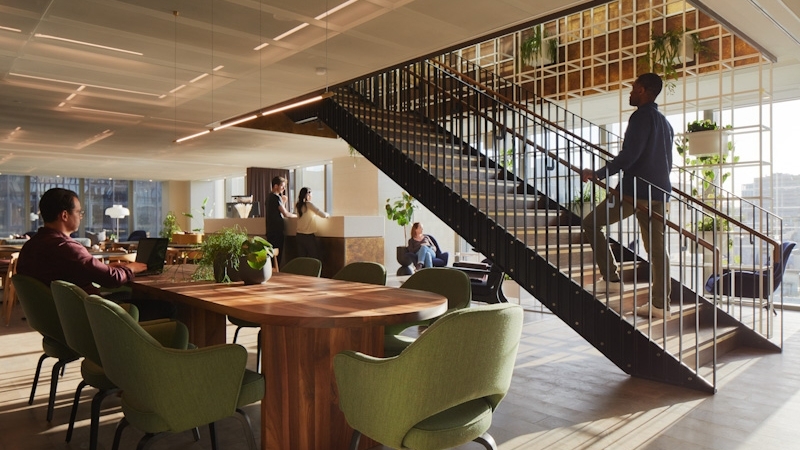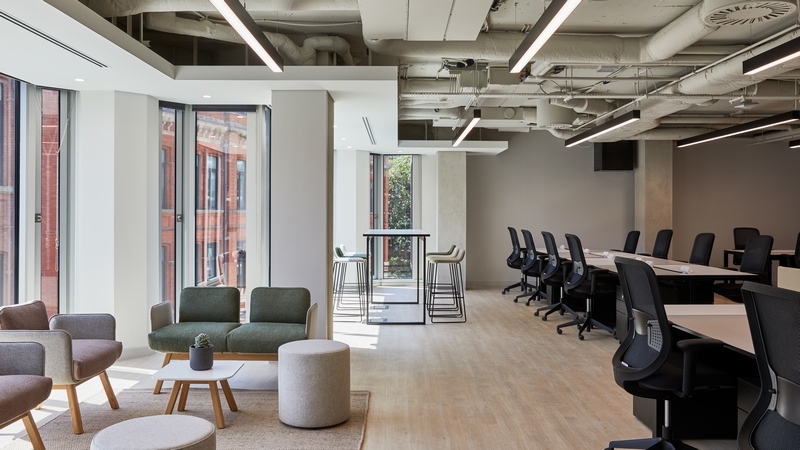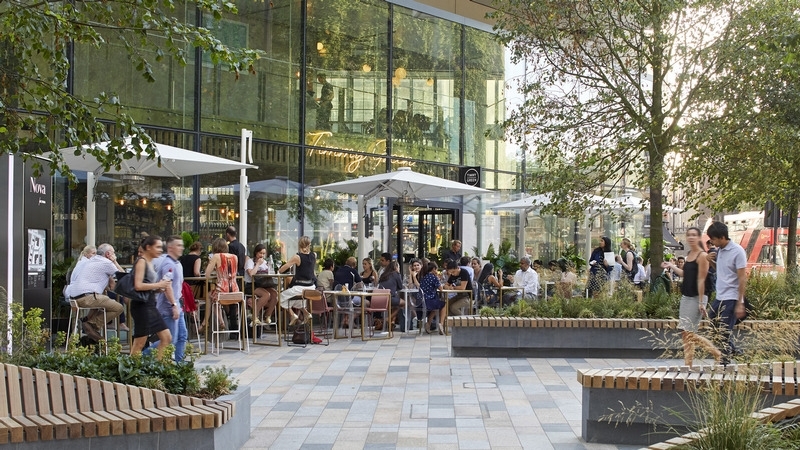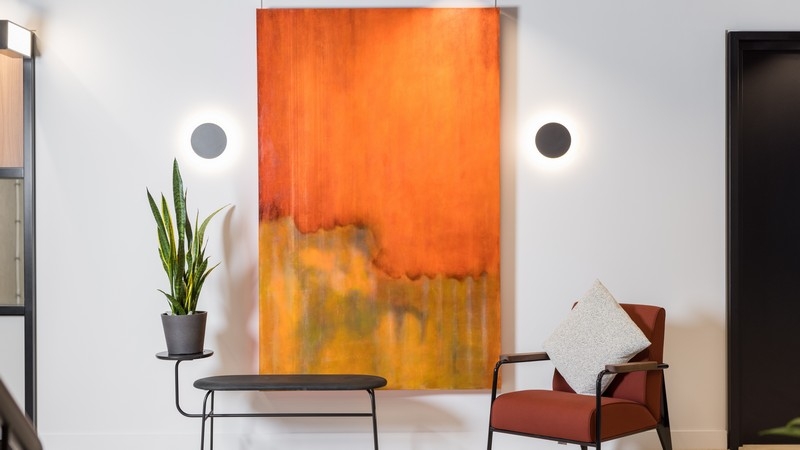Going outside is an essential part of the day, but shouldn’t you be able to breath fresh air in the office as well? Surely the air quality in the office should be better? Thankfully, recent advances in office air conditioning technology have given us the opportunity to monitor, analyse and improve office air quality, and as a health-conscious flexible office, Myo is leading the way.
An innovative new air sensor system is presently being trialed at Myo 123 Victoria Street. This pioneering collaboration of industry and academia is called Butterfly, and it’s been created in partnership with Pulse Systems, Imperial College London and Liverpool University – built with the pinnacle of office wellness accreditation in mind: WELL Building StandardTM certification.
The WELL standard is a performance-based system for measuring, certifying, and monitoring features of the built environment that impact human health and wellbeing. In short, the International WELL Building Institute is a global leader in certifying that spaces advance human health and well-being.
Air is one of the core criteria of a healthy workplace. What we’re talking about isn’t just about temperature – although temperature is often cited as the overall measurement for comfort by office dwellers, and we’ve all been in an office, at some point or other in our career, that is freezing in winter and far too hot in summer. Temperature is in fact just one element which makes up a bigger picture of that which we cannot see or feel – the quality of the air in the office environment.
We asked our partner Nick Munro, Visiting Professor of Design at Royal Academy of Engineering Imperial College London and the inventor of Butterfly, to tell us more about his system and why air quality is so important.
Nick Munro, Visiting Professor of Design at Royal Academy of Engineering Imperial College London
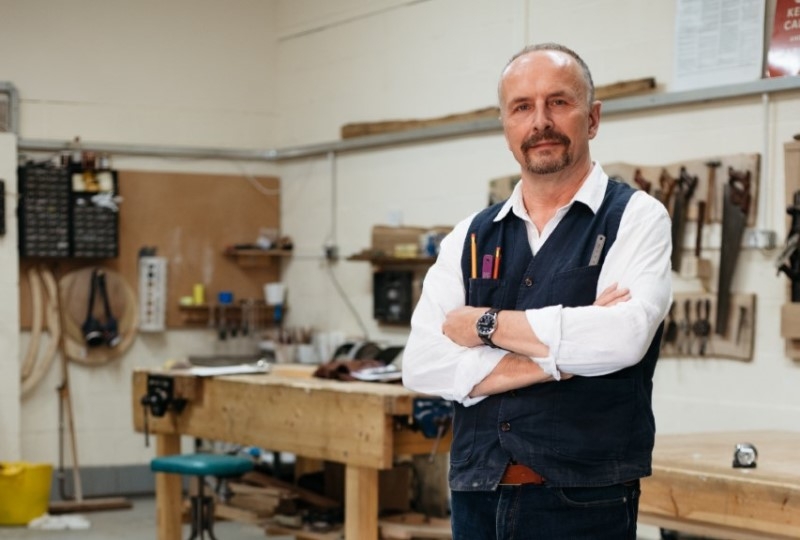
Why is air quality in flexible offices so important?
Recently, there has been significant drive from campaigning groups and the UK government to tackle pollution. However, our cities and towns are still badly polluted. The nature of the Covid-19 pandemic has brought another angle to the problem. Bringing the cleanliness of the spaces we inhabit, not just the office and workplace, but the tube, the pub and even our homes into the spotlight.
Many companies post-Covid have taken the decision to update their heating, ventilation, and air conditioning (HVAC) systems to more efficient models that pull better fresh air into the building more frequently. Landsec’s flexible offices have done so, at both Myo 123 Victoria Street and Myo Liverpool Street.
The impact of breathing polluted air is widely documented but what not everyone realises is that poor office air quality can have an impact on workplace productivity too. Economists from the National University of Singapore conducted an extensive study into the impacts of poor air quality on productivity. Assessing the output at two textile factories in China, the team found that on days when the pollution went up, the productivity went down. The reason for this could be because when the particles enter into the bloodstream of workers, that impacted how they physically felt, slowing them down. The team also found evidence that there is a psychological element, that working in a polluted environment for a long period of time could affect your mood or disposition to work.
What are we looking for when it comes to office air quality?
There are five key components when it comes to quality of air in the workplace. It’s these five areas that the Butterfly system has been developed to measure. Capturing them all gives a clear picture.
The first is carbon dioxide, or CO2. When we are talking about CO2 what we really mean is a lack of oxygen in the office environment. We’ve all been in a full meeting room for a long time and felt perhaps lethargic, you might immediately turn to the coffee or tea for a boost but actually it’s fresh air, oxygen, that you need.
Then we have particulate matter (PM). There are various levels of PM from 1, 2.5 up to 10. These sizes represent the diameter of the particulates in the air, which could be dust or anything airborne that has a physical size.
Then there are volatile organic compounds (VOC). Here we are talking about chemicals. For example, if you have an office space with furniture in it that is made of formaldehyde, which is very common in furniture, that will have an impact on the air quality. As will cleaning products, even perfumes. Thankfully, Myo’s flexible offices use furniture with the minimum possible levels of VOC.
Lastly, we have temperature and humidity. The Chartered Institution of Building Services Engineers (CIBSE) sets a standard for humidity. In their latest set of standards, they link humidity to conditions to virus transfer. 40 per cent humidity is the gauge, below 40 per cent it becomes easier for viruses to propagate and above 40 per cent it becomes more difficult. The humidity level can be increased if necessary, within certain comfort factors, by switching on your atomizers, which Myo’s flexible offices have.
You can also increase humidity by increasing the biophilia in a workspace. To considerably increase the humidity you do need the technology, but the office plants can have an impact, even though smaller. Of course, the other benefit to plants is that they have a psychological benefit, they affect the ambiance of a workplace, office or meeting room. This blending of technology and nature, is really important in any new initiative I think.
Myo’s flexible offices use furniture with the minimum possible levels of VOC
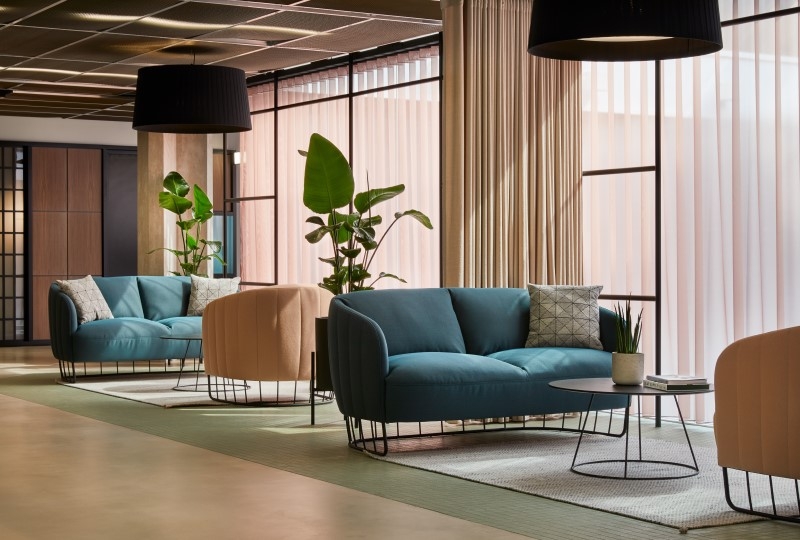
How does Butterfly work in the office environment?
Butterfly provides real time feedback on the air quality of the Myo flexible office space. When talking about the data we often use the comparison of the weather report, which means that the data you might see is designed to be understood. The Met Office has systems behind the scenes which only make sense to a meteorologist; so does Butterfly but there is no reason why office air quality data can’t make sense to a layperson if it is communicated effectively.
We measure the air in the office very carefully and meticulously. For example, thinking again about Covid-19 which is passed from person to person in the air, viruses are parasites – they have to live on things, they need a certain minimum size of particulate matter to cling to in order to survive. This is why pollution is linked to the spread of Covid-19. The minimum size of a particulate matter that can host Covid-19 is a measurement called a micron, so one micron is the minimum. The Butterfly device can measure down to one micron. This doesn’t mean it is measuring the virus, but it does mean you can measure whether the conditions are becoming hospitable to the Covid-19 virus. In other words, is there is particulate matter which is big enough for the virus to survive on.
What’s truly important about measuring office air quality in this way is that it means we can do something about it. The system in Myo’s flexible offices is so advanced it would capture if someone was excessively spraying air freshener for a few minutes, or if the office cleaning team used a new product with certain chemicals in it. By measuring we can obviously make positive changes – switch to better products.
With Myo we’ve been measuring there for the past six weeks. This has given us insights into the HVAC system which we’ve been impressed with in terms of its ability to filter and regulate the indoor environmental quality. The data gathered is to a high standard, which is very reassuring, of course, now the building has lower occupancy because we’re on lockdown. When it re-opens, we will get different readings, but it’s designed for a building occupied by people.
Map of Butterfly sensors at Myo 123 Victoria
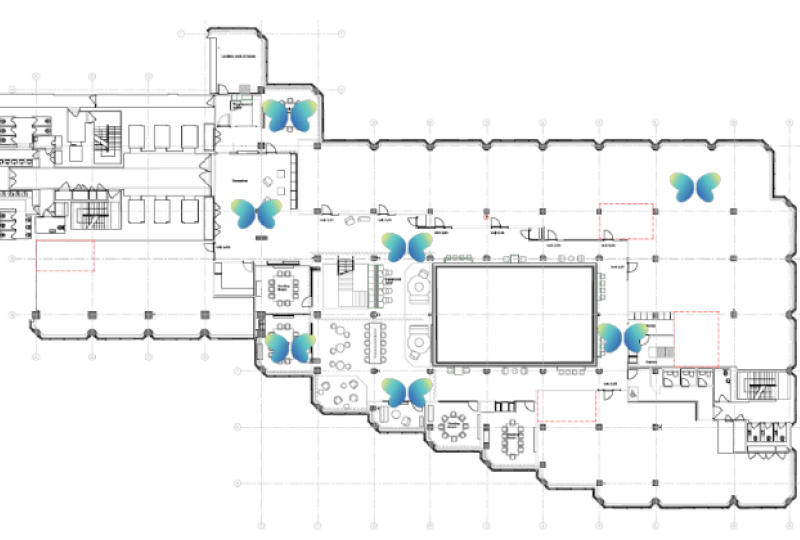
What’s next for the Butterfly system?
Our system is by no means a finished product. The next step is for us to consider linking the system to the office HVAC so that the two technologies can talk to one another. What this will mean is that if a reading goes high an instruction will be sent to the office HVAC.
Imagine that meeting room of 12 people again, before everyone gets to drowsy levels the Butterfly system will recognise the change and alert the HVAC, which will switch on to filter more oxygen from outside into the room.
The other big benefit to running it linked to HVAC is that it is then operating at the optimum energy level. If you imagine driving a car, when you rev the engine you stress the car and your consumption of fuel goes up. Smarter technology that allows the systems to work together is about future proofing in a way that is intelligent and sustainable. There is an enormous waste of energy around the world in all our buildings, if you can modify even by five per cent the net payback is vast.
What’s exciting about the Butterfly and Myo partnership is that we are optimising the performance of the office building, reducing maintenance, as well as (and most importantly) ensuring we are fostering the best possible working environment for the health and wellbeing of the Myo flexible office customers who work in the building. As a happy by-product we are also creating new jobs in the green economy that keep these smart technologies working.
We’re lucky to be in a period where this technology exists, that we can do this and the market is receptive, as it’s created an imperative.
Nice to have, is now very much: got to have, so speak to your flexible office provider to find out what they are doing to improve air quality in the workplace. If the answer is not enough, perhaps it’s time to move to Myo.
[1] https://www.sciencedaily.com/releases/2019/01/190103110735.htm

